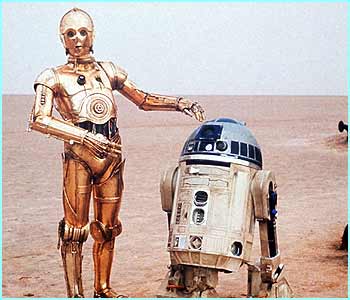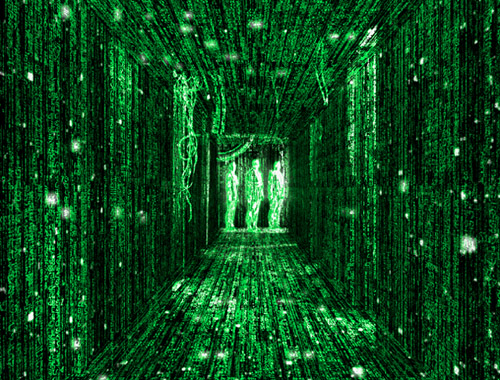A Brief History of Science Fiction Film Music
References, Links, and Works Cited
Created by Jessica Rooney
Last updated 5/1/06


The Matrix (1999)
Ability of Sound Effects and Music to Pull in Audience
Just as the Matrix computer program seems to pull the characters in and out of worlds, the sound effects and music in The Matrix are essential in drawing in the audience into the story. In the opening scenes, surround sound is used extensively to achieve this. In the very beginning scene, the voices of Trinity and Morphius are heard without a visual of their characters, establishing sound as a signifier of truth despite what might appear visually. When Trinity later asks Morphius “Do you hear that?”, she is also seeming to address the audience, and through curiosity at what she can hear that they can not the audience invests more attention to the scene, thus believing in it more. This audience participation continues into Trinity’s original fight scene and is strengthened with the use of surround sound. For example, the sound effects of her body movements as she jumps and performs jujitsu “whoosh” past the audience, moving from rear to front speakers, seeming to move past the audience as if they were also in the scene (Evans 189). Because the audience is then positioned inside the soundtrack, they can take “a more biased or privileged position within the diegesis” (Evans 189) or world of the film, and this ownership allows for more believability.
Sound is also used in transition between worlds, especially in the beginning when the audience does not have a firm understanding of the differences between each world yet. The most obvious example is when Neo first moves between the computer controlled Matrix and the slave real world. In the room where Neo chooses the pill that will “free his mind,” there is no original sound. But when he first touches the mirror, an electric crackle is heard and the sudden building of music creates tension. This anxiety caused by the edgy strings and moving bass line increases, mounting almost to a fearful level, and then climaxes as Neo screams as he is covered by the liquid mirror. Yet this scream is transformed completely into a modem-like electric sound as the camera travels down his throat, completely without music. This seems to show the audience that Neo is nothing more that a digital code created by a computer even though this has not been explained yet by Morphius. The scene then shows Neo’s rebirth in the slave real world is accompanied by the reemergence of music and a different sonic atmosphere, signaling to the audience that a change in realm has been made. In this scene and others like it, if this passage had been explained through some other technique as a voice-over the effect would not have been as strong. The sound effects and music allows the audience to experience this realization on their own without the filter of someone else telling them how to feel or what to think. Because of this, the world is made more real because the emotions created are directly felt by the audience.
